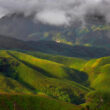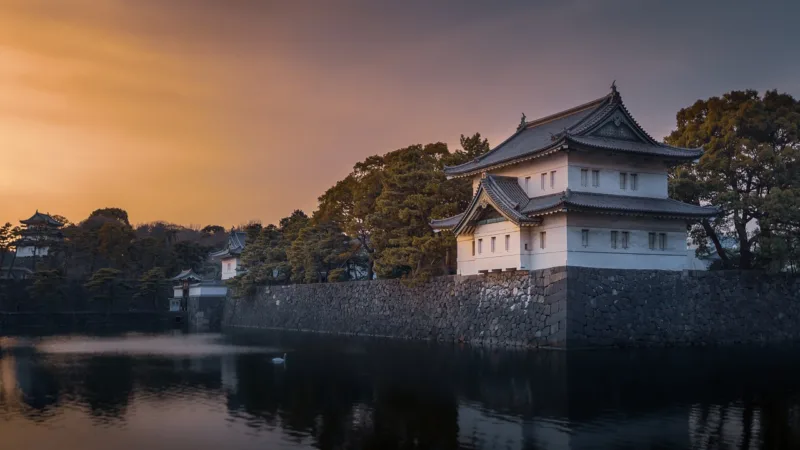In the heart of Tokyo, a city pulsating with modernity and tradition, lies the resplendent Imperial Palace. Our journey begins as we delve into the history, architecture, and allure of this iconic landmark.
A Stroll Through History
The Imperial Palace’s Rich Heritage
Nestled on the site of the historic Edo Castle, the Imperial Palace stands as a testament to Japan’s imperial history. Dating back to the Tokugawa shogunate, the palace’s origins trace to the 15th century, and it has witnessed the ebbs and flows of Japanese history.
Architectural Grandeur
The architectural marvels within the palace grounds astound visitors. The main residence, Fukiage Palace, showcases a harmonious blend of traditional Japanese design and modern elements. The meticulous attention to detail in the Nijubashi Bridge and the stunning stonework of the walls speak volumes about the craftsmanship of the bygone era.
Tranquil Gardens Amidst Urban Bustle
East Gardens: A Verdant Oasis
Escape the urban hustle by exploring the meticulously landscaped East Gardens. Cherry blossoms in spring and vibrant foliage in autumn transform this haven into a kaleidoscope of colors. Here, visitors can find solace amidst the remnants of the original Edo Castle structures.
Ninomaru Garden: Serenity Personified
The Ninomaru Garden, an integral part of the palace grounds, beckons with its serene ponds and meticulously manicured landscapes. This haven of tranquility offers a respite from the bustling city, allowing visitors to immerse themselves in the beauty of nature.
Imperial Palace: A Hub of Cultural Significance
Kokyo Gaien National Garden
Surrounding the palace is the sprawling Kokyo Gaien National Garden, a place of leisure and cultural significance. Locals and tourists alike flock to this vast expanse for recreational activities and seasonal events, creating a harmonious blend of nature and community.
Embracing Tradition: Imperial Ceremonies
The Imperial Palace plays a pivotal role in Japan’s rich tapestry of traditions. Witnessing the imperial ceremonies, such as the New Year’s Greeting and the Emperor’s Birthday, provides a unique opportunity to partake in Japan’s cultural legacy.
Visitor’s Delight: Access and Tours
Navigating the Palace Grounds
Accessing the Imperial Palace is convenient, with multiple entry points. Visitors can explore the East Gardens freely, while guided tours offer deeper insights into the palace’s history and architectural nuances.
Seasonal Attractions
The palace offers a different spectacle with each season. Spring cherry blossoms, summer greenery, autumn foliage, and winter tranquility—all contribute to a mesmerizing experience throughout the year.
Planning Your Visit
Essential Tips for a Memorable Experience
- Booking Guided Tours: Enhance your visit by booking guided tours to unravel the hidden gems and stories behind the palace’s grandeur.
- Respecting Cultural Norms: Observing cultural etiquette ensures a respectful and enjoyable experience for both visitors and locals.
- Timing Matters: Consider visiting during special events or seasonal changes to witness the palace’s dynamic transformations.
Similar Articles
Frequently Asked Questions (FAQs) about Imperial Palace Tokyo
1. What is the Imperial Palace of Tokyo?
The Imperial Palace Tokyo is a historic landmark situated in the heart of Tokyo, Japan. It stands on the grounds of the former Edo Castle and serves as the primary residence of the Emperor of Japan. The palace holds significant cultural and historical importance, showcasing a blend of traditional Japanese architecture and modern elements.
2. How can I visit the Imperial Palace?
Visitors can access the Imperial Palace Tokyo through various entry points, with the East Gardens being open to the public. Guided tours are available for a more in-depth exploration of the palace’s history and architecture. It’s advisable to check the official website for any restrictions or special events that might affect your visit.
3. What are the must-see attractions within the palace grounds?
The must-see attractions include the Nijubashi Bridge, a picturesque double bridge leading to the main entrance, and the East Gardens, known for their seasonal beauty. The Ninomaru Garden offers a tranquil retreat, while the Kokyo Gaien National Garden surrounds the palace, providing a vast space for leisure and cultural activities.
4. Are there any cultural events or ceremonies held at the Imperial Palace?
Yes, the Imperial Palace hosts various cultural events and ceremonies throughout the year. Notable occasions include the New Year’s Greeting and the Emperor’s Birthday celebration. These events offer visitors a unique opportunity to witness and participate in Japan’s rich cultural traditions.
5. Is photography allowed within the Imperial Palace?
While photography is generally permitted in the outer areas and gardens, there are restrictions in certain areas, particularly inside the palace buildings. Visitors are advised to adhere to the guidelines and respect the privacy and cultural significance of the surroundings.
6. What is the significance of the East Gardens?
The East Gardens of the Imperial Palace are a scenic oasis within the bustling city. They house remnants of the original Edo Castle structures and boast vibrant cherry blossoms in spring and breathtaking foliage in autumn. The gardens provide a peaceful escape, allowing visitors to immerse themselves in the beauty of nature.
7. Can I witness the changing of the guard at the Imperial Palace?
Yes, visitors can witness the changing of the guard ceremony at the Imperial Palace. This ceremonial event takes place at the main entrance and adds to the overall experience of exploring the historical site.
8. Are there any restrictions for visitors?
While much of the palace grounds are open to the public, certain areas, especially the inner palace buildings, may have restricted access. It’s advisable to check the official website or inquire on-site for the latest information on any restrictions or special considerations for visitors.
9. What are the best times to visit the Imperial Palace?
The Imperial Palace offers a unique experience in every season. Spring and autumn are particularly popular, with cherry blossoms and colorful foliage creating picturesque landscapes. However, each season has its charm, so the best time to visit depends on personal preferences and the desire to witness specific natural phenomena.
10. How can I enhance my visit to the Imperial Palace Tokyo?
To make the most of your visit, consider booking guided tours to gain deeper insights into the palace’s history and cultural significance. Additionally, respecting cultural norms, timing your visit during special events, and embracing the seasonal attractions contribute to a memorable and enriching experience.









